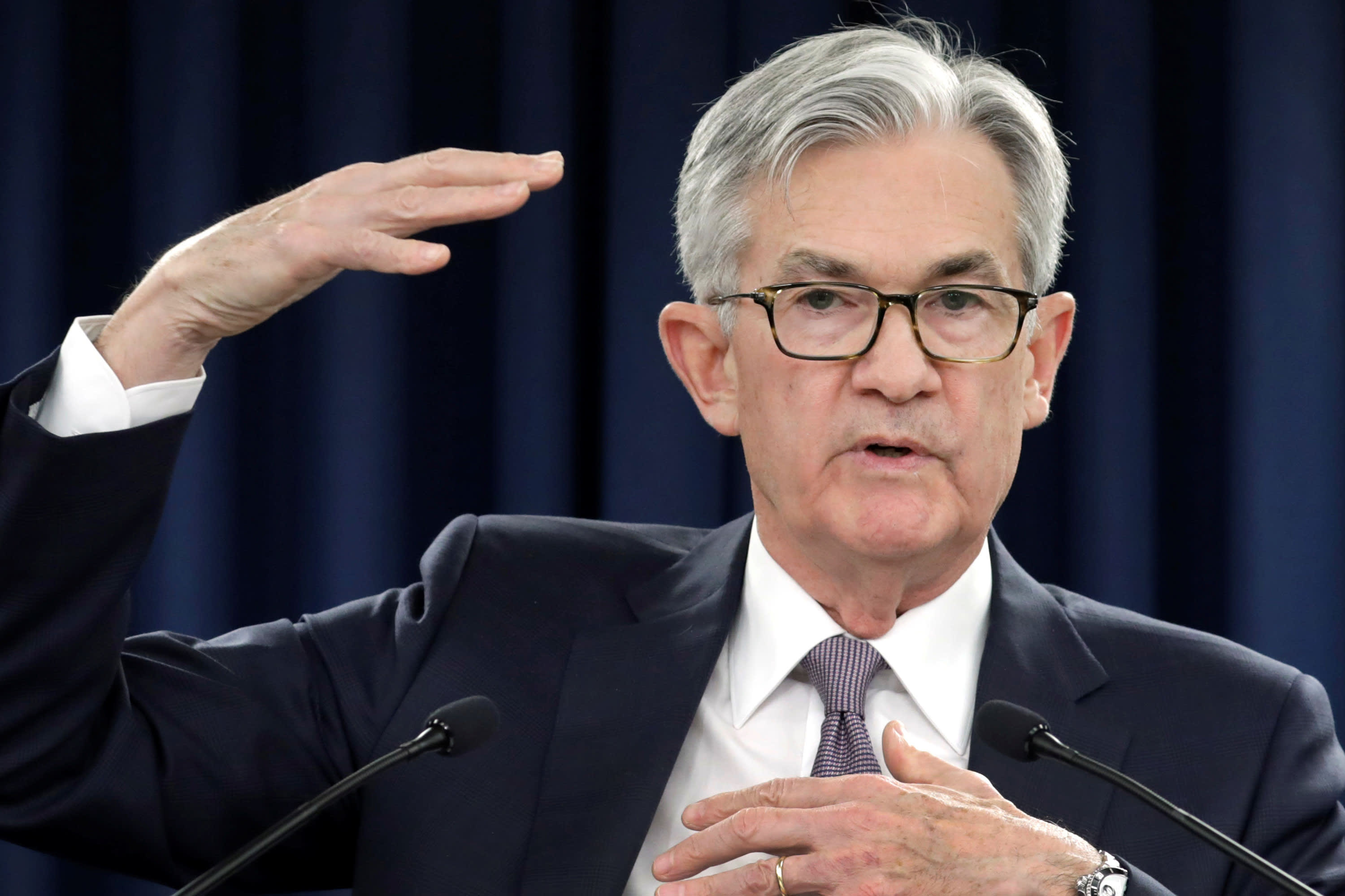Federal Reserve Chairman Jerome Powell speaks at his news conference following the two-day meeting of the Federal Open Market Committee (FOMC) meeting on interest rate policy in Washington, January 29, 2020.
Yuri Gripas | Reuters
The Federal Reserve is expected to again promise to do whatever it takes to fix the economy at the same time it is working on what more it can do.
The Federal Open Market Committee winds down its two-day July meeting Wednesday with a 2 p.m. ET statement. That will be followed by a press briefing by Fed Chairman Jerome Powell, who could provide an update on the Fed’s view on the economy and also the extraordinary actions it has taken so far..
“I don’t think we’re going to learn a ton at this meeting, but I think behind the scenes, it will be pretty interesting around the work they’re doing and setting up for the September meeting,” said Rick Rieder, BlackRock chief investment officer of global fixed income. He said the Fed could be considering such things as yield curve control, providing forward guidance on inflation and interest rates, and more asset purchases.
“I don’t’ think we’re going to learn specifically about any of that. I think the press conference will be interesting,” said Rieder. “I think they are going to continue to err on the side of doing more rather than doing less. They are going to continue to emphasize the uncertainty.”
The Fed Tuesday said it was extending its lending programs to businesses, governments and individuals until the end of the year. They had been set to expire Sept. 30. The Fed’s many facilities and programs, created during the Covid crisis, cover such markets as commercial paper, corporate bonds, and municipal bonds, as well as provide credit to businesses. It is also buying mortgage securities and Treasurys.
Some of the programs have not had much demand so far, but Rieder said the Fed would rather be overprepared. “I think they’re going to fill the plane with enough fuel to get to Australia. You may not go there, but you want to make sure you have enough fuel to get there,” he said. “I think when Chair Powell speaks he’s going to talk also about uncertainties even though the economy has been resilient in some ways, and the data has been good in some ways, like housing and consumption.”
Focus on Congress
The markets will watch the Fed Wednesday, but are more focused this week on what type of stimulus package Congress can agree to. The Senate Republicans have proposed $1 trillion, but it is likely to go higher before there is compromise. The bill includes the enhanced unemployment benefits that expire at the end of Friday unless they are extended.
“The markets would like to see the next round of fiscal relief include funds for state and local governments, education and health care along with an extension of supplemental unemployment benefits,” notes Kathy Jones, Charles Schwab chief fixed income strategist. “‘There is a risk of disappointment if the size of the relief isn’t large enough or doesn’t target the hard hit areas of the economy.”
The Fed is not expected to comment on the fiscal package details though Powell may sound supportive if he is asked about it, as the Fed has been pushing for more stimulus.
Rieder said the Fed is likely considering providing forward guidance that would help clarify what it is thinking about its 2% inflation target and how long it might be willing to let inflation rise above it before it raises rates. It could announce such a plan in September.
“The question is, is it over time or in the long run? It depends how they phrase that,” he said. “What is over time? If you’re going to say that we want to see 2% average inflation over what period of time? Markets want to know what is the period of time? Is it a six-month period?”
The Fed is also expected to talk about yield curve control. That would be using Fed asset purchases to target interest rate levels at a certain part of the yield curve.
Michael Gapen, Barclays chief U.S. economist, said he had previously thought the Fed would move to do yield curve control but now thinks it would be unnecessary and not leave the Fed with as much flexibility.
“They were talking about it so much I though maybe they were going to, but after I read the minutes to the June meeting, I don’t think they’ll do it. It’s certainly on the list of potential tools,” he said.



 This “NEW CONCEPT” Trading Strategy Prints Money!… (INSANE Results!)
This “NEW CONCEPT” Trading Strategy Prints Money!… (INSANE Results!)